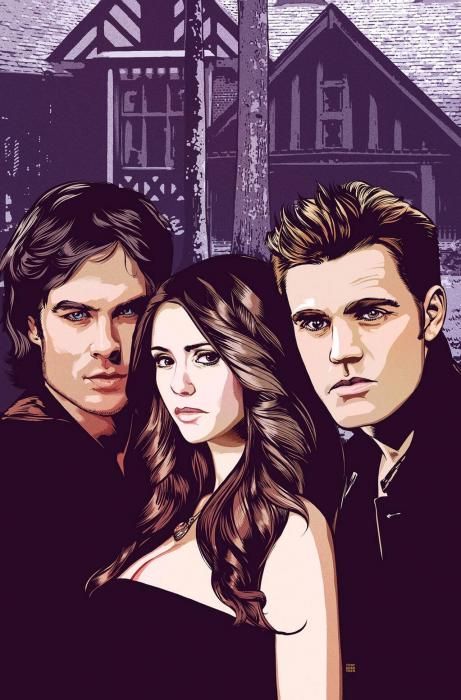"The Vampire Diaries" #1 by Colleen Doran and Anthony Shasteen, presents "Vervain," a kick-off one-shot story for an anthology series set in the world of the popular CW TV series. It was released digital-first on Halloween, but just hit the local comic book shelves this last week. "Vervain" is about the Damon and Stefan and a deal they make that is active over a 24-year period in late 1880s Mystic Falls, more than a century before Elena enters the scene.
Doran, best known for her sweeping space opera, "A Distant Soil," doesn't retread familiar ground from the show, but on the other hand, her story is derivative of a much older tale with themes of youth and beauty, good and evil and supernatural deal-making.
The deal itself and Julian's personality and appearance immediately call to mind the plot and titular character from Oscar Wilde's "The Picture of Dorian Gray," written during the same time period of "Vervain" is set, although Doran's story is set in the show's fictional American town of Mystic Falls, Virginia, instead of Wilde's Fin de siècle England.
Doran's plot is built around a problem that she creates and then solves neatly, but the tidiness of the plot is offset by how all the characters in "Vervain" are utterly flat. Julian, the antagonist, is particularly thin on substance. While the mechanics of the deal conjure up some suspense about his actions and fate, Julian is too easily disposed of by the Salvatores, and more importantly, he is too simple, static and shallow a character to hold up his end of the story. Unlike Dorian Gray, Julian has no innocence to lose, no relatively unblemished soul to bargain with. He exchanges power for power, only to foolishly appear at a loss when he fails to keep up with the times, and the access he controls is no longer worth much to the Salvatores. From the first page, Julian is already a shell of beauty wrapped around a core of selfish narcissism.
"Vervain" misses thematic point of occult deals in its lack of contrast between inward moral decay and outward unchanging beauty. The plot and themes end up being a pale shell compared to the pathos and drama of the moral descent in Wilde's novel. Of course, Doran doesn't have same amount of space to work in, but that's part of the problem - a story this short may be ill-suited to do justice to the whole "occult compact" setup.
The dialogue and interactions that Doran writes for the Salvatore brothers fail to provide something to make up for the thematic void. While Damon receives some funny lines consistent with his playful bad-boy ways, Stefan is nothing more than a bland pretty face. The camaraderie between the brothers "Vervain" adds no extra dimension to the brothers' characterization.
Also, although the target audience is obviously existing fans of the show, "The Vampire Diaries" #1 fails as an introduction for readers who might be completely new to the characters. It provides so little in the way of characterization that the reader who is not already invested in the characters wouldn't find anything to bring them back for the next story.
Shasteen's artwork has recognizable likenesses of the actors who play the Salvatore brothers, and he ages Julian well over the 24-year span of the story. His transitions are smooth and it's easy to follow the shifts in setting and timeline. However, Shasteen's line is terrible for emotional and physical expressivity. His bodies are so stiff that figures consistently look like tracings or cut-out dolls. His faces are blunted emotionally by the same lack of movement, resulting in clunky-feeling action and conversations where the frozen-looking faces feel ill-matched to the dialogue. Mettler's warm palette is muted and muddy throughout the comic. The effect is depressing and dark, which is right for the violence and gore but feels like a mismatch for the Doran's casually upbeat tone.
"Vampire Diaries" #1 isn't a promising start to a spin-off anthology, since it neither significantly enriches the backstory for fans of the show nor tells a story that is memorable for its own merits.

